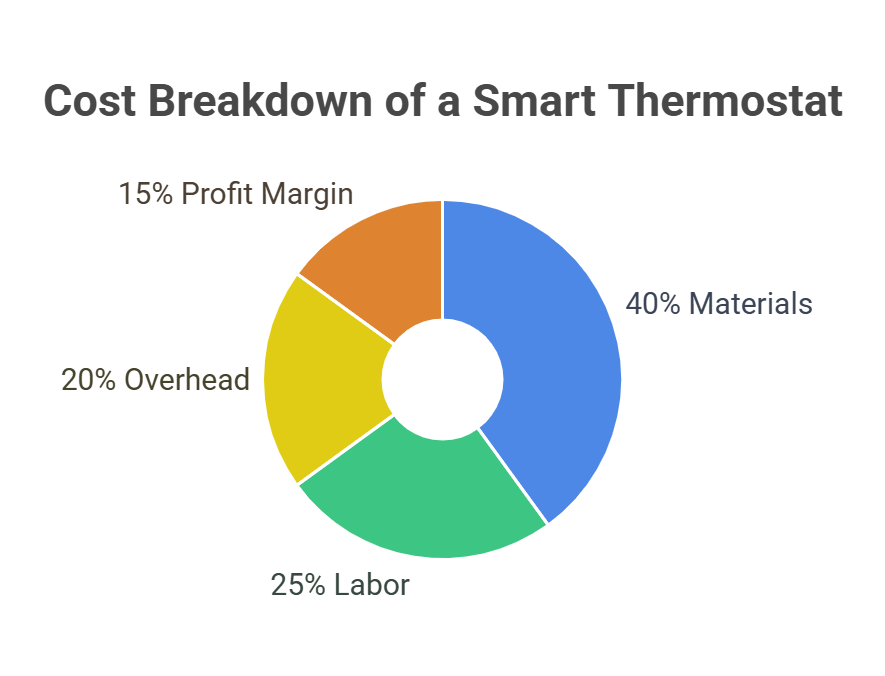Electronics Manufacturing Pricing Unveiled: A Designer’s Guide to Costs, Decisions, and Savings
Whether you’re a designer sketching circuits or a decision-maker signing off on budgets, understanding electronics manufacturing pricing is your superpower. It’s the difference between a product that thrives in the market and one that stalls before it even launches.
3/2/20256 min read


Picture this: you’ve just sketched out the next big thing in electronics—a sleek IoT gadget or a cutting-edge circuit board that could redefine an industry. The design is flawless, the specs are spot-on, and your team is buzzing with excitement. Then comes the inevitable question: “How much is this going to cost to make?” Suddenly, the room goes quiet. Pricing in electronics manufacturing can feel like a black box—mysterious, unpredictable, and a little intimidating. But here’s the good news: it doesn’t have to be.
Whether you’re a designer sketching circuits or a decision-maker signing off on budgets, understanding electronics manufacturing pricing is your superpower. It’s the difference between a product that thrives in the market and one that stalls before it even launches. In this guide, we’ll peel back the layers of manufacturing costs, break down what drives them, and share practical strategies to keep your project on track—and on budget. Let’s dive in.
What Exactly Is Electronics Manufacturing Pricing?
At its core, electronics manufacturing pricing is the total cost of turning your brilliant idea into a tangible product. It’s not just about slapping components onto a board; it’s the whole journey—design, materials, labor, assembly, testing, and getting it out the door. For designers and deciders, this number isn’t just a line item—it’s the heartbeat of your project’s feasibility.
Think about the differences between, say, mass-producing a consumer gadget like a smartwatch versus crafting a custom industrial sensor. The processes, timelines, and costs vary wildly. A smartwatch might lean on high-volume automation, while that sensor could demand precision machining and small-batch attention. Either way, pricing shapes how competitive your product can be. Get it wrong, and you’re either bleeding cash or pricing yourself out of the market. Get it right, and you’re golden.
The Big Players: What Drives Electronics Manufacturing Pricing?
If pricing is a puzzle, here are the pieces you need to fit together. These factors aren’t just numbers—they’re the real-world forces that designers and decision-makers wrestle with every day.
1. Raw Materials Costs
Let’s start with the obvious: you can’t build electronics without stuff. Semiconductors, resistors, capacitors, printed circuit boards (PCBs)—these are the building blocks. But their prices? They’re anything but stable. Remember the chip shortage a few years back? Designers were sweating bullets as lead times stretched and costs soared. Even in 2025, supply chain hiccups can send material prices on a rollercoaster. For a typical project, materials might eat up 40-50% of your budget. Choose a rare component, and that number spikes.
2. Labor Costs
Then there’s the human touch—or lack thereof. If you’re manufacturing in a place like Southeast Asia, labor might be a fraction of the cost compared to North America or Europe. But don’t assume cheaper is always better. Skilled workers who can troubleshoot a tricky assembly are worth their weight in gold. And if you’re leaning on automation (think robotic arms soldering SMT components), upfront costs rise, but per-unit labor drops. It’s a trade-off designers need to pitch to the decision-makers upstairs.
3. Manufacturing Process Complexity
Not all electronics are created equal. A basic single-layer PCB for a kid’s toy is a breeze compared to a multi-layer board for a medical device. Techniques like surface-mount technology (SMT) or precision machining add layers of complexity—and cost. I once worked with a designer who insisted on a custom enclosure with tight tolerances. It looked amazing, but the machining costs nearly tanked the project. Complexity is cool, but it’s a budget buster if you’re not careful.
4. Volume and Scale
Here’s where scale becomes your friend—or your foe. Producing 10 prototypes for testing? Expect a hefty per-unit price. Ramp up to 10,000 units, and economies of scale kick in, slashing costs dramatically. Decision-makers love this part—it’s where the numbers start to sing. But designers, beware: small runs for niche products can sting, so plan accordingly.
5. Design and R&D Costs
Before a single component hits the assembly line, there’s the upfront grind—research, prototyping, testing. This is where designers shine, but it’s also where costs sneak in. A complex design with multiple iterations can rack up bills fast. Customization, like tweaking a board for a specific client, only adds fuel to the fire. I’ve seen teams burn through thousands just to get the first working sample. It’s an investment, sure, but one that deciders need to greenlight.
6. Overhead and Logistics
Finally, the stuff nobody likes to talk about: factory overhead, shipping, tariffs. Renting a facility, powering machines, paying for quality checks—it all adds up. Then there’s getting your product from the factory to the customer. A designer friend of mine once overlooked import duties on a shipment from China to the U.S. The surprise bill hit like a truck. In 2025, with trade tensions still simmering, logistics can be a wild card.
Breaking Down the Numbers: A Real-World Example
So what does this look like in practice? Let’s say you’re building a mid-range IoT device—maybe a smart thermostat. Here’s a rough cost breakdown:
Materials: 40% (sensors, microcontroller, PCB)
Labor: 25% (assembly and testing)
Overhead: 20% (factory costs, utilities)
Profit Margin: 15% (gotta keep the lights on)
For a $50 retail product, manufacturing might cost $30-$35 per unit at scale. But here’s the kicker: hidden costs like compliance (think RoHS or FCC certifications) or last-minute design tweaks can push that number higher. I’ve seen deciders balk at these extras, but skipping them risks a failed launch. It’s a balancing act.


Pricing Models: How Manufacturers Set the Bill
Understanding how pricing gets calculated can feel like cracking a secret code. Here are the main models manufacturers use—and what they mean for you.
Cost-Plus Pricing
This is the straightforward one: tally up costs, add a markup (say, 15-20%), and there’s your price. It’s predictable, but if your costs are high, you might price yourself out of the market. Designers love it for transparency; deciders watch the margins like hawks.
Market-Based Pricing
Here, manufacturers peek at competitors. If rival smart thermostats cost $40 to make, they’ll aim around there—regardless of their own costs. It’s risky if your expenses don’t align, but it keeps you competitive. Deciders often push this to stay in the game.
Value-Based Pricing
This one’s trickier but powerful. If your product’s a premium game-changer (think high-end wearables), you charge based on what customers will pay, not just what it costs. Designers need to justify the “wow factor” here, and deciders need to trust the market will bite.
Each model has trade-offs. Pick the wrong one, and your project’s DOA.
How to Slash Costs Without Sacrificing Quality
Now for the fun part: saving money. Designers and deciders, listen up—these strategies can make or break your budget.
1. Negotiate with Suppliers
Don’t just accept the first quote. I once haggled a 10% discount on bulk capacitors just by asking. Build relationships, shop around, and don’t be shy.
2. Design for Manufacturability (DFM)
This is a designer’s secret weapon. Simplify your layout—fewer layers, standard components—and watch costs drop. A colleague redesigned a board to avoid a custom connector; it saved thousands over the run.
3. Outsource vs. In-House
Outsourcing to a contract manufacturer can cut overhead, but you lose some control. In-house gives you flexibility but jacks up costs. Deciders, this one’s on you—weigh the pros and cons.
4. Leverage Technology
Automation isn’t cheap upfront, but it pays off in volume. AI-driven testing can catch defects early, too. I’ve seen it halve rework costs on a big run.
5. Plan for Bulk
Order big if you can. A small run might cost $50 per unit; 10,000 units could drop to $20. It’s a cash-flow gamble, but the savings are real.
What’s Happening Now: Pricing Trends in 2025
As of March 2025, the electronics world is buzzing. 3D printing is cutting prototype costs, sustainable materials are trending (and pricier), and supply chains are still recovering from past chaos. Consumer demand for green tech—like solar-powered gadgets—is nudging prices up, too. Designers, this is your cue to innovate; deciders, it’s your chance to invest smart.
Wrapping It Up
Electronics manufacturing pricing isn’t a monster under the bed—it’s a challenge you can tackle. From raw materials to scale, every factor is a lever you can pull to shape your costs. Designers, keep manufacturability in mind from the first sketch. Deciders, trust your team but crunch the numbers. Together, you can turn a great idea into a profitable reality.
So, what’s your next move? Ready to rethink your design or negotiate that supplier deal? Drop your thoughts below—I’d love to hear how you’re balancing cost and quality in your next project.
